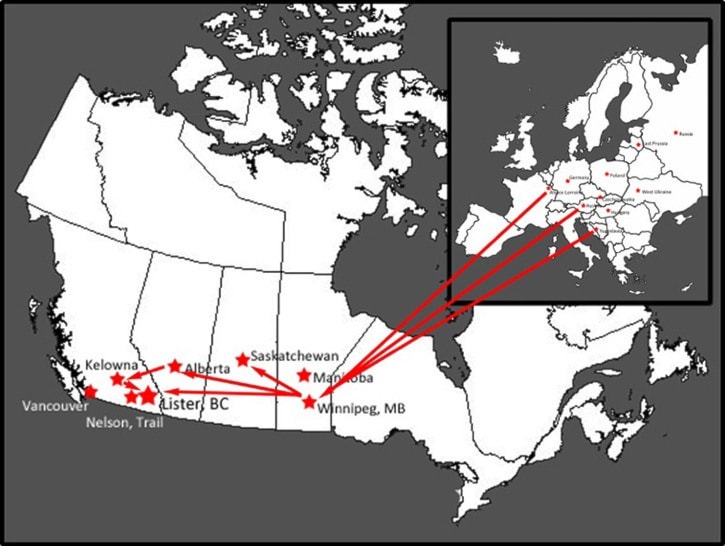“History is written by the conquerors.” That, or something like it, is what we often hear, no matter what kind of history we’re looking at.
In the Creston Valley, we can’t talk too much about “conquest” but we can certainly say that local history has been, to a very large extent, written by the dominant cultural group: that is to say, by those of British extraction.
 But there have been many other nationalities represented in Creston Valley’s history. These people have played just as important a role in the community’s evolution as did the British folks, but their contribution has been considerably less recognized.
But there have been many other nationalities represented in Creston Valley’s history. These people have played just as important a role in the community’s evolution as did the British folks, but their contribution has been considerably less recognized.
It’s time to celebrate the “other” Europeans who have helped build this Valley. That is why the Creston Museum is preparing to open its brand-new exhibit, “Born to the Soil”, on April 30.
“ ‘Born to the soil’ is a phrase from the Canadian government’s immigration policy of the early 1900s,” said museum manager Tammy Hardwick. “The slogans and recruitment processes changed over the decades, but the basic goal of immigration was pretty constant: Canada wanted strong, sturdy people who would come here to farm the land.”
The new exhibit looks at the community of Wynndel prior to the First World War, where two brothers from Norway and their children (21 in all) not only established farms in that town, but also triggered a major population boom.
The second settlement of Lister, in 1929, saw numerous families from Germany, Poland, Russia, the Ukraine, and other countries coming in to take over land vacated by returned Great War soldiers a few years earlier. Many of those families are still actively farming in the community today.
The Doukhobors, displaced several times since arriving in Canada in 1899, began arriving in the Creston Valley in 1938. Although a number of these families came here to farm, many individuals also contributed to other local businesses and industries.
“We also have a few individual stories: a close look at a single family that represents an important part of Canadian immigration policy or a significant reason why people chose to leave Europe,” says Hardwick.
These family stories reflect interwar immigration, when people wanted to leave Europe to escape economic devastation, as well as post-war immigration where people struggling under social, political or economic upheaval sought safety and security in a new country.
The exhibit opens on April 30. The event begins at 3 p.m. with a tour of the Creston Museum through the eyes of an immigrant. The exhibit will be officially opened at 3:45, and an international food sampler (and the museum’s annual general meeting) will follow at 4.
Admission is by donation for members of the museum and $15 per person for non-members. For more information or for tickets, please contact the museum at 250-428-9262 or crestonmuseum@telus.net.
—CRESTON MUSEUM
